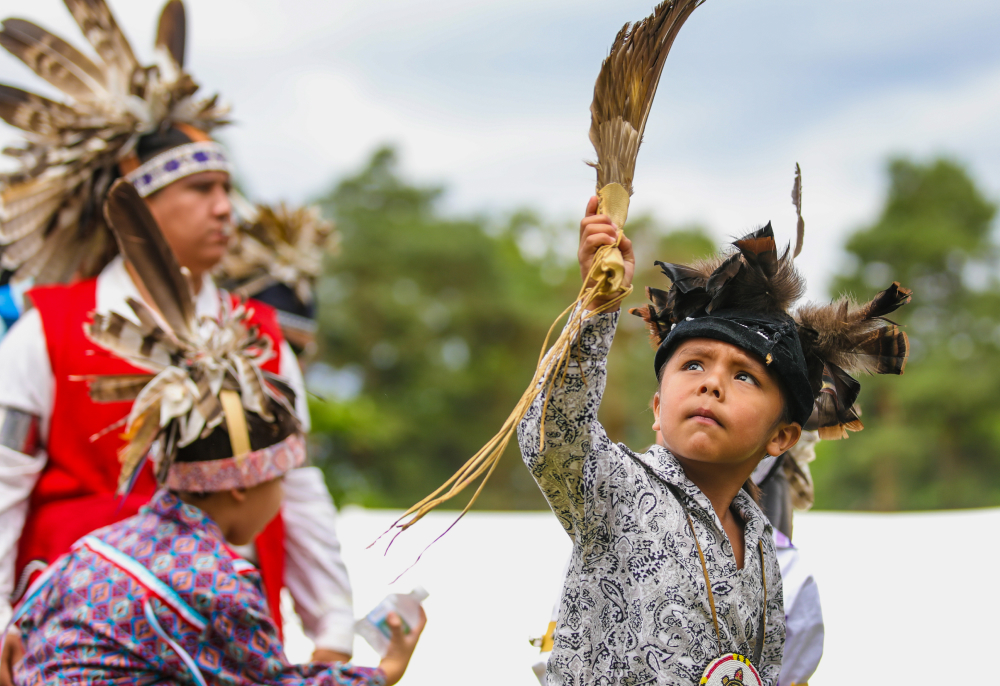
Keepers of the Western Door: The Enduring Sovereignty of the Seneca Nation
By [Your Name/Journalist Name]
From the verdant valleys of Western New York, where the Finger Lakes carve ancient paths, emerges a story of resilience, power, and unyielding self-determination. This is the narrative of the Seneca Nation of Indians, one of the original five nations of the Haudenosaunee (Iroquois) Confederacy, known historically as the "Keepers of the Western Door." Their journey, spanning centuries of profound change, devastating loss, and remarkable resurgence, offers a compelling study of a sovereign nation navigating the complexities of modern America while fiercely guarding its heritage.

The Seneca, or Onöndowa’ga:’ (People of the Great Hill), once commanded a vast territory stretching from Lake Ontario south to the Susquehanna River. They were formidable warriors, skilled diplomats, and astute traders, their influence extending far beyond their traditional lands. Their position within the Haudenosaunee Confederacy, guarding the western flank, underscored their strategic importance in the political and military landscape of pre-colonial North America.
"Our history is etched into this land, into every stream and every hill," states a spokesperson for the Nation, reflecting a deep spiritual and ancestral connection. "We have been here since time immemorial, and our responsibilities to the land and to our people are eternal."
A Legacy Forged in Fire and Treaty
The arrival of European powers brought both new opportunities and unprecedented challenges. The Seneca found themselves entangled in colonial rivalries, often playing a pivotal role in the shifting alliances between the French, British, and eventually, the nascent United States. The American Revolution proved particularly devastating. Divided in their loyalties, many Seneca sided with the British, a decision that led to the brutal Sullivan Expedition of 1779, which systematically destroyed Seneca villages and crops, aiming to break their power and spirit.
The aftermath was dire. Stripped of much of their land and ravaged by war and disease, the Seneca faced an existential crisis. Yet, from this crucible of despair emerged a new era of diplomacy and cultural revitalization. The Treaty of Canandaigua, signed in 1794 between the Seneca Nation and the United States, stands as a cornerstone of their modern sovereignty. Negotiated by figures like the revered Chief Red Jacket and the pragmatic Chief Cornplanter, the treaty recognized the Seneca’s right to their remaining lands "forever" and affirmed their status as a distinct nation.
"The United States acknowledges the lands reserved to the Seneca Nation, to be their property; and that no part of the lands shall be sold or alienated without their consent," Article II of the treaty explicitly states, a testament to the enduring legal foundation of Seneca land rights and sovereignty.
This treaty, though frequently challenged and often violated by subsequent state and federal actions, remains a potent symbol and legal instrument for the Seneca Nation. It underpins their inherent right to self-governance, to establish their own laws, and to operate independently of New York State jurisdiction on their territories.
The Trauma of Kinzua and Unbroken Spirit

The 20th century presented a new form of existential threat: the Kinzua Dam. Despite the 1794 treaty and decades of legal battles, the U.S. Army Corps of Engineers, under the pretext of flood control, seized over 9,000 acres of the Seneca’s Allegany Territory in the 1960s to construct the dam. This act forcibly displaced hundreds of Seneca families, submerged sacred sites, ancestral burial grounds, and fertile farmlands. It was a profound betrayal, described by many as a cultural genocide.
"The Kinzua Dam was a wound that never truly healed," recounts a Seneca elder, her voice tinged with lingering pain. "It tore families apart, destroyed our way of life, and showed us that even treaties signed ‘forever’ could be broken by the government. But it also taught us that our spirit, our identity, could not be drowned."
The trauma of Kinzua galvanized the Nation, instilling an even deeper resolve to protect their remaining lands and assert their sovereign rights. It underscored the vital importance of economic independence and political strength in defending against external pressures.
A New Dawn: Economic Sovereignty Through Gaming
In the late 20th and early 21st centuries, the Seneca Nation embarked on a path that would transform its economic fortunes: gaming. Leveraging their sovereign status, the Nation established the Seneca Gaming Corporation, opening casinos in Niagara Falls (2002), Buffalo (2007), and Salamanca (2004) – all on Seneca territories.
These enterprises have generated hundreds of millions of dollars in revenue, fundamentally reshaping the lives of Seneca citizens and the surrounding region. The profits are reinvested directly into the Nation, funding essential services that many municipalities struggle to provide: healthcare, education, elder care, housing, infrastructure development, and cultural preservation programs.
"Gaming was never just about money; it was about reclaiming our destiny," explains a Seneca Nation councilor. "It allowed us to create jobs for our people, build modern schools, provide healthcare, and finally have the resources to protect and promote our language and traditions. It’s the engine of our self-sufficiency."
The Seneca Nation is now one of the largest employers in Western New York, providing thousands of jobs, both for Seneca citizens and non-Native residents. Their economic impact is undeniable, contributing significantly to the regional economy through direct employment, vendor contracts, and tourism.
Challenges and Assertions of Sovereignty
Despite their economic success, the Seneca Nation’s journey is not without its ongoing battles. The relationship with New York State, in particular, has been marked by periods of intense friction, largely revolving around revenue sharing from gaming and the contentious issue of taxation on Seneca-owned businesses.
New York State has repeatedly sought to impose taxes on sales of gasoline and tobacco products on Seneca territories, despite the Nation’s assertion of their tax-exempt status as a sovereign entity, protected by federal law and treaties. These disputes often lead to protests, blockades, and legal challenges, highlighting the persistent tension between state jurisdiction and tribal sovereignty.
"We are not a municipality of New York State; we are a separate, sovereign government," asserts a Seneca Nation President in a past statement. "Our right to govern ourselves and operate our businesses without state interference is enshrined in treaties and federal law. We will continue to defend our sovereignty against any attempts to diminish it."
Beyond economic disputes, the Nation also grapples with internal challenges common to many communities, including the opioid crisis, the need for continued economic diversification beyond gaming, and the critical work of preserving the Seneca language (Onöndowa’ga: niga:wë:nöh), which, like many indigenous languages, faces the threat of extinction. Significant resources are now dedicated to language immersion programs for children and adults, ensuring the continuity of their linguistic heritage.
Looking to the Future: Resilience and Revival
Today, the Seneca Nation stands as a vibrant, self-governing entity with a clear vision for its future. Its government, led by an elected President and Council, manages a complex array of departments and services that parallel those of any modern nation. They engage in international diplomacy, form economic partnerships, and advocate for indigenous rights on a global stage.
Cultural revitalization remains a cornerstone of their identity. Annual ceremonies like the Midwinter Ceremony, Green Corn Ceremony, and Strawberry Ceremony continue to be observed, connecting the present generation to the ancient ways of their ancestors. Traditional arts, storytelling, and music are actively promoted, ensuring the continuity of Seneca identity.
The Seneca Nation’s story is a powerful testament to the enduring strength of indigenous peoples. It is a narrative not just of survival, but of revival – of a nation that, despite immense historical trauma and ongoing challenges, has leveraged its inherent sovereignty to build a prosperous and culturally rich future for its citizens.
From the "Keepers of the Western Door" in a vast, untamed wilderness to a modern economic and political force in the heart of Western New York, the Seneca Nation continues to write its own history, guided by the wisdom of its ancestors and an unwavering commitment to its people and its land. Their journey serves as a potent reminder that sovereignty, once recognized, is a flame that, though sometimes flickering, will never truly be extinguished.

